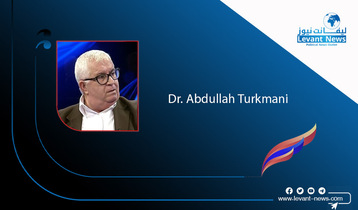-
Russia's Syrian Laboratory

Which country in the world has a record 12.4 million people struggling to find enough food to eat whilst at the same time may find itself home to a strategic nuclear bomber fleet? The paradoxes of the situation in Syria a decade into the conflict is typified by the Russian role in the country. Ten years of conflict in Syria have included over five years of direct Russian military involvement which has helped the Regime win back 30% of the country’s territory.
According to a new Institute for the Study of War (ISW) report “the Russian military identifies its deployment to Syria as the prototypical example of future war—an expeditionary deployment to support a coalition-based hybrid war”. Russia and Iran are taking every opportunity to increase their influence in Syria. They recently urged private security companies to open offices across Syria, offering young men large amounts of money to work for them amid deteriorating economic conditions and a lack of job opportunities in the Syrian regime-controlled areas. Russia started to establish a military unit consisting of local elements in Syria’s northeastern al-Hasakah province, according to local sources.
Russia has been developing the Hmeimim Air Base in Latakia in western Syria in preparation for it to receive strategic nuclear bombers as part of plans to strengthen the Russian presence in the country, Russian Nezavisimaya Gazeta reported. As the ISW report recognises Syria has become a laboratory and a training ground for the Russians to test out equipment and allow their soldiers to gain real world experience. They describe it as a “foundational shaping experience for the development of the Russian Armed Forces” which explains the significance of the investment to date.
The military and security presence that Russia has in Syria seems to be so deeply in the country’s post-civil war DNA that it is hard to envisage a separation in future. The two countries relationship has evolved from an alliance into a more disproportionate set up whereby the Regime and the Syrian ‘state’ is beholden to Moscow like never before. And vice a versa Moscow sees Assad and his forces as simply one piece on the complex chessboard that typifies the state of power dynamics in the country.
The fact that the Regime only truly controls 15% of its own borders, according to Asharq al-Awsat, is testimony to the incredible loss of power suffered by Damascus in order to maintain any power at all. Meanwhile Moscow continues to parallel its military strategic investment and control of the country with a monopoly over the most effective strands of mediation.
The UN Special Envoy for Syria said there had to be “constructive international diplomacy” if the peace process is to move forward in any way, appearing before the Security Council behind closed doors on Tuesday. Later that same week in a two-day meeting, Turkey, Russia, and Iran are expected to discuss the situation on the ground in Syria and the political process as well as efforts to draw up a new constitution for the country. The Astana process guarantors meeting in the 15th round of Syria peace talks in Sochi following recent failures of the Syrian Constitutional Committee in Geneva – the first such meetings since late 2019.
Russia has been allowed to develop its Syria strategy regardless of whether a Democrat or a Republican was in the White House and when the ISW report recommends that “the United States and its allies must prepare to confront an increasingly effective Russian military that is intent on further developing expeditionary capabilities and using them in coalition environments”, it is hard to spot the obvious political will.
In many senses Syria has been surrendered as a zone of strategic concern by America allowing regional powers (Iran, Israel, Turkey) to compete along with Russia as the single largest power operating in the country. The likelihood of Washington trying to rebalance the scales, despite their continued light footprint presence in the northeast of the country, is minimal. Instead, the US and others will have to see what signposting comes from Russia’s actions in Syria towards the future of warfare elsewhere.
Hybrid coalition efforts, the use of drones and advanced technology as well as the hyper localisation of ceasefires and local agreements around sovereignty and access are all issues that will manifest in other fragile states or post-civil war environments across the globe. Syria has become Russia’s playground but what it does there cannot be ignored any longer.
James Denselow
You May Also Like
Popular Posts
Caricature
BENEFIT Sponsors BuildHer...
- April 23, 2025
BENEFIT, the Kingdom’s innovator and leading company in Fintech and electronic financial transactions service, has sponsored the BuildHer CityHack 2025 Hackathon, a two-day event spearheaded by the College of Engineering and Technology at the Royal University for Women (RUW).
Aimed at secondary school students, the event brought together a distinguished group of academic professionals and technology experts to mentor and inspire young participants.
More than 100 high school students from across the Kingdom of Bahrain took part in the hackathon, which featured an intensive programme of training workshops and hands-on sessions. These activities were tailored to enhance participants’ critical thinking, collaborative problem-solving, and team-building capabilities, while also encouraging the development of practical and sustainable solutions to contemporary challenges using modern technological tools.
BENEFIT’s Chief Executive Mr. Abdulwahed AlJanahi, commented: “Our support for this educational hackathon reflects our long-term strategic vision to nurture the talents of emerging national youth and empower the next generation of accomplished female leaders in technology. By fostering creativity and innovation, we aim to contribute meaningfully to Bahrain’s comprehensive development goals and align with the aspirations outlined in the Kingdom’s Vision 2030—an ambition in which BENEFIT plays a central role.”
Professor Riyadh Yousif Hamzah, President of the Royal University for Women, commented: “This initiative reflects our commitment to advancing women in STEM fields. We're cultivating a generation of creative, solution-driven female leaders who will drive national development. Our partnership with BENEFIT exemplifies the powerful synergy between academia and private sector in supporting educational innovation.”
Hanan Abdulla Hasan, Senior Manager, PR & Communication at BENEFIT, said: “We are honoured to collaborate with RUW in supporting this remarkable technology-focused event. It highlights our commitment to social responsibility, and our ongoing efforts to enhance the digital and innovation capabilities of young Bahraini women and foster their ability to harness technological tools in the service of a smarter, more sustainable future.”
For his part, Dr. Humam ElAgha, Acting Dean of the College of Engineering and Technology at the University, said: “BuildHer CityHack 2025 embodies our hands-on approach to education. By tackling real-world problems through creative thinking and sustainable solutions, we're preparing women to thrive in the knowledge economy – a cornerstone of the University's vision.”
opinion
Report
ads
Newsletter
Subscribe to our mailing list to get the new updates!




















